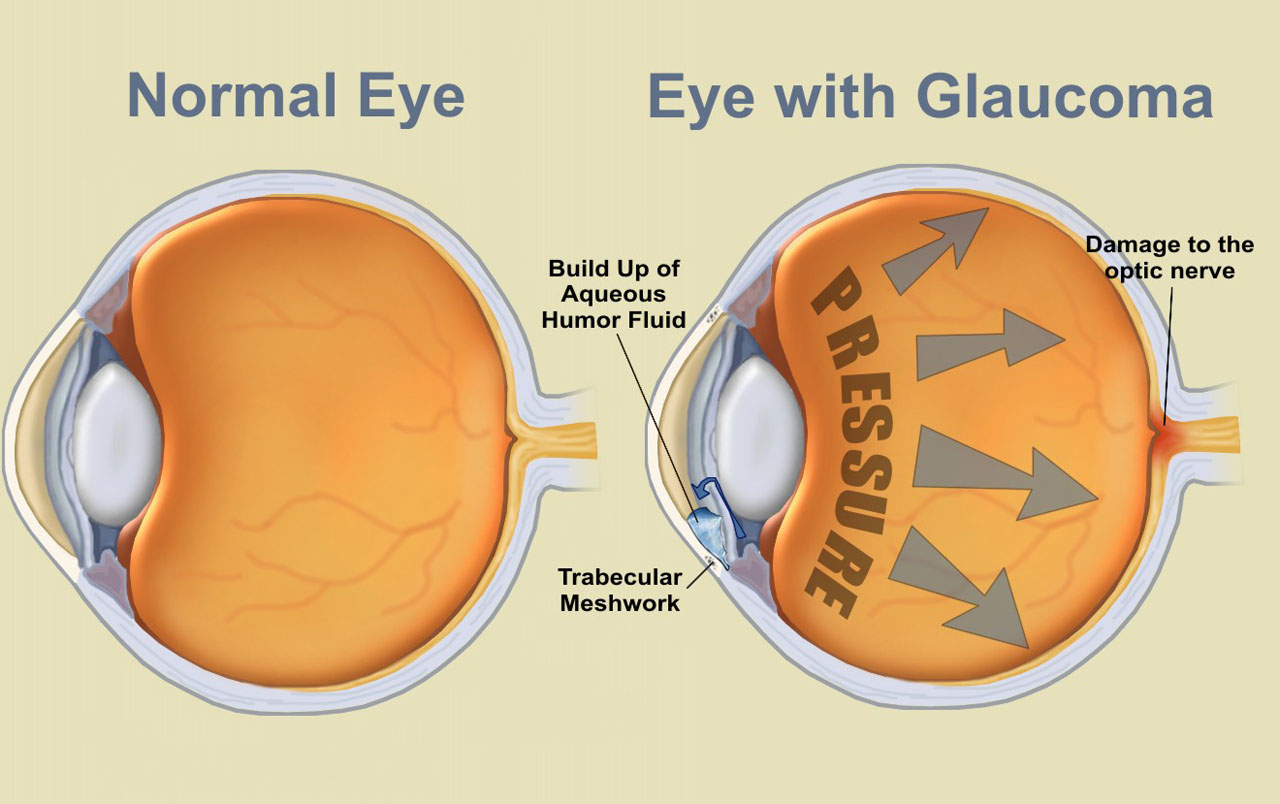
What is Glaucoma?
Glaucoma is a condition that causes damage to your eye’s optic nerve and gets worse over time. It’s often linked to a build-up of pressure inside your eye. Glaucoma tends to be inherited and may not show up until later in life.
The increased pressure, called intraocular pressure, can damage the optic nerve, which transmits images to your brain. If the damage continues, glaucoma can lead to permanent vision loss. Without treatment, glaucoma can cause total permanent blindness within a few years.
Most people with glaucoma have no early symptoms or pain. You need to see your eye doctor regularly so she can diagnose and treat glaucoma before a long-term visual loss happens. If you are over age 40 and have a family history of the disease, you should get a complete eye exam from an eye doctor every 1 to 2 years. If you have health problems like diabetes or a family history of glaucoma or are at risk for other eye diseases, you may need to go more often.
What Causes Glaucoma?
It is the result of high fluid pressure inside your eye. This happens when the liquid in the front part of the eye doesn’t circulate the way it should.
Normally, the fluid, called aqueous humor, flows out of your eye through a mesh-like channel. If this channel gets blocked, the liquid builds up. That’s what causes glaucoma. The reason for the blockage is unknown, but doctors do know it can be inherited, meaning it’s passed from parents to children. Less common causes include a blunt or chemical injury to your eye, severe eye infection, blocked blood vessels inside the eye, and inflammatory conditions. It’s rare, but sometimes eye surgery to correct another condition can bring it on. It usually affects both eyes, but it may be worse in one than the other.
What Are the Types of Glaucoma?
There are two main kinds:
- Open-angle glaucoma
- Angle-closure glaucoma
Who Gets Glaucoma?
It mostly affects adults over 40, but young adults, children, and even infants can have it.
You’re more likely to get it if you:
Are over 40
Have a family history of glaucoma
Have poor vision
Have diabetes
Take certain steroid medications, like prednisone
Have had trauma to the eye or eyes
What Are the Symptoms?
Most people don’t have any. The first sign is often a loss of peripheral, or side vision. That can go unnoticed until late in the disease. That’s why glaucoma is often called the “sneak thief of vision.”
Detecting glaucoma early is one reason you should have a complete exam with an eye specialist every 1 to 2 years. Occasionally, the pressure inside the eye can rise to severe levels. In these cases, you may have sudden eye pain, headache, blurred vision, or the appearance of halos around lights.
If you have any of the following symptoms, seek immediate medical care:
- Seeing halos around lights
- Vision loss
- Redness in the eye
- An eye that looks hazy (particularly in infants)
- Nausea or vomiting
- Eye pain
- Narrowed vision (tunnel vision)
How Is Glaucoma Treated?
Your doctor may use prescription eye drops, laser surgery, or microsurgery.
Eye drops: These either reduce the formation of fluid in the eye or increase its outflow.
Laser surgery: This procedure can slightly increase the flow of the fluid from the eye for people with open-angle glaucoma. It can stop fluid blockage if you have angle-closure glaucoma.
Microsurgery: In a procedure called a trabeculectomy, the doctor creates a new channel to drain the fluid and ease eye pressure. Sometimes this form of glaucoma surgery fails and has to be redone. Your doctor might implant a tube to help drain fluid.
Can You Prevent Glaucoma?
No. But if you diagnose and treat it early, you can control the disease.
Any vision lost to Glaucoma cannot be regained, most people with glaucoma who follow their treatment plan and have regular eye exams don’t go blind.
